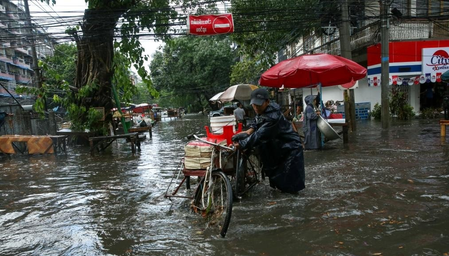
Yangon: Myanmar’s Ministry of Health has been implementing preventive measures to prevent the outbreak of acute diarrhoea during the rainy season, state-owned Myanmar Radio and Television (MRTV) reported on Thursday.
The health ministry also issued a statement outlining several preventive measures against acute diarrhoea, the report said.
These included washing hands before and after preparing food, after touching dirt and trash, and after using the toilet. The public is also urged to maintain personal hygiene, use sanitary toilets, drink boiled water, eat thoroughly cooked food, and cover food to prevent contamination by flies.
The ministry also noted that acute diarrhea can occur in any season but is more common during the monsoon and the end of the rainy season, the report said.
The rainy season in Myanmar typically begins in mid-May and continues through October.
The health ministry also emphasised the importance of clean food, clean hands, clean water, and clean toilets in preventing diarrhea outbreaks, the report said.
MRTV reported that Yangon region, Ayeyarwady region, and Mon state recorded the highest number of diarrhoea cases in 2024, Xinhua news agency reported. To address the situation, the Ministry of Health is conducting public awareness campaigns, monitoring high-risk areas, and preparing public hospitals to treat potential patients, if necessary, the report said.
According to the World Health Organisation (WHO), diarrhoeal disease is the third leading cause of death in children under five-years-old and is responsible for killing around 4,43,832 children, every year. Diarrhoea can last several days and can leave the body without the water and salts that are necessary for survival. In the past, for most people, severe dehydration and fluid loss were the main causes of diarrhoea-associated deaths.
Now, other causes such as septic bacterial infections are likely to account for an increasing proportion of all diarrhoea-associated deaths. Children who are malnourished or have impaired immunity, as well as people living with HIV, are most at risk of life-threatening diarrhoea.
